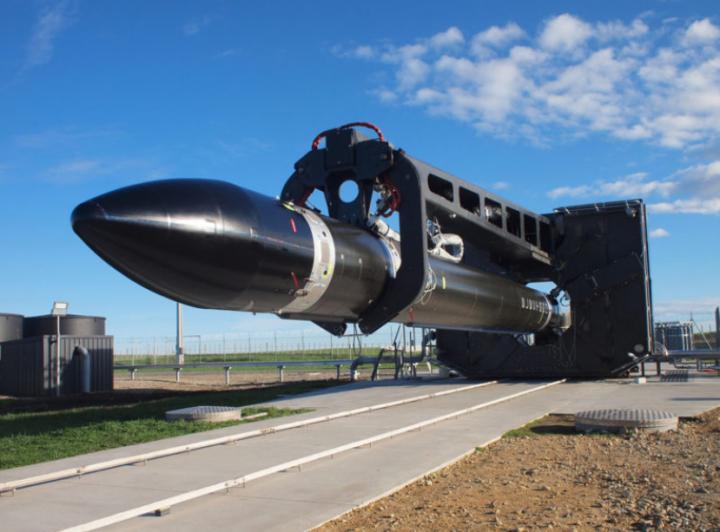7.08.2019

LOGAN, Utah — Rocket Lab announced Aug. 6 it will attempt to recover the first stage of its Electron small launch vehicle over the next several months, eventually reusing it to allow the company to increase its launch rate.
The company has already started work to instrument and modify Electron first stages so that they can survive reentry at hypersonic speeds, with the ultimate goal of having stages caught in midair by a helicopter so that they can be easily refurbished and launched again.
Peter Beck, chief executive of Rocket Lab, said in an interview that the goal of this effort is not to reduce launch prices but instead increase the company’s launch rate without having to expand its factory.
“At the moment we just can’t build enough rockets,” he said. The company’s factory current produces one Electron every 30 days. “We need to get that down to one a week.”
The company started to pursue recovery and reuse of the first stage early this year, including adding instrumentation on the previous Electron flight June 29. The next Electron, scheduled to launch Aug. 16, will carry a data recorder designed to survive reentry to measure the stage’s performance during recovery.
The key challenge, Beck said, is to get through what he dubbed “the wall”: the sudden deceleration of the first stage during reentry, when it goes from Mach 8.5 to nearly zero in 75 seconds. “That is really, really, hard to do,” he said. “The amount of energy you have to dissipate is phenomenal.”
Beck declined to go into detail about how exactly the stage will slow down because it involves the use of proprietary technology. He did note that, unlike SpaceX’s Falcon 9, the Electron first stage won’t do a series of engine firings to slow down. A small launch vehicle like the Electron, he argued, doesn’t have the margin to carry the extra propellant needed for such maneuvers.
After the 10th flight of the Electron — the upcoming launch is the eighth — Rocket Lab plans to do a “block upgrade” of the rocket, which will include adding components to support recovery. In a best-case scenario, Beck said it might be possible to recover an Electron first stage by the end of the year, with the stage splashing down in the ocean downrange from the company’s New Zealand launch site.
Once that is accomplished, Beck said Rocket Lab will immediately move into the second stage of the recovery, which involves catching the stage, descending under a parachute, with a helicopter equipped with a “skyhook” attachment. “As a budding helicopter pilot, I can tell you the helicopter piece is easy, compared to getting through the wall,” he said.
The midair recovery will allow Rocket Lab to quickly refurbish the stage and launch it again. Beck declined to speculate how many times each stage could be flown. “Even if I only fly it once more, I essentially double production,” he said. “That’s a massive win. It’s not easy to double your production rate in a factory.”
The additional of recovery systems to the Electron first stage should have only a “marginal payload hit” on the vehicle, which Beck said would likely be counteracted by overall improvements in the rocket’s performance.
Beck said he previously believed reusability wouldn’t be feasible for a small launcher. The combination of a better understanding of the rocket’s performance, along with the pressure to increase production, led him and the company to reconsider it.
“For a long time, I said we weren’t going to do reusability,” he said. “This is one of those occasions where I have to eat my hat.”
Quelle: SN
